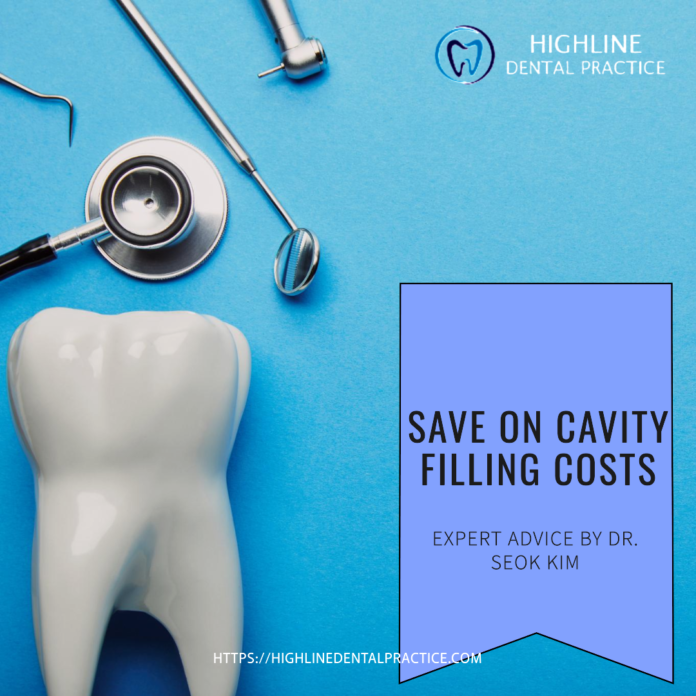Dr. Seok Kim Explains How to Save on Cavity Filling Costs
While dental health is an essential component of overall well-being, it’s tragic that many would delay getting any care for fear of high cost. In cavity treatment, the cost of service can be very wide apart. Dr. Seok Kim, a trusted expert in the field of dentistry, shares practical strategies on how patients can save on cavity filling costs without compromising the quality of care given.
Understanding the Basics of Cavity Filling Costs
Before discussing economies of price, it is useful to consider what factors influence the fee charged for cavity fillings. Several factors are involved in influencing fees:
Type of Filling Material:
Amalgam (Silver): It is usually the cheapest filling choice, but also less cosmetic.
Composite (Tooth-Colored): This is one of the most popular options due to its natural color, but is a little more expensive.
Ceramic or Gold: It is premium due to durability but often the most costly.
Less expensive to use in easily accessible areas, fillings require precision for procedures that involve molars or multi-surface fillings.
Geographic Location and Dental Practice:
The cost could vary due to your location and the overhead cost of the dental clinic.
Knowing these factors, patients could make wiser decisions and find potential cost-cutting methods.
Dr. Seok Kim’s Best Tips to Cut Fillings Cost
Dr. Seok Kim insists that prevention is the best way to save money spent on cavities. However, when a filling turns out to be necessary, the following strategies can reduce costs:
1. Focus on regular check-ups at the dentist’s
Preventative care is the cornerstone of cost-effective dentistry. Routine checkups help identify cavities in their early stages, where smaller (and less expensive) fillings are often all that is needed. Lapsing between these visits can result in larger cavities that lead to expensive, more complex treatments.
Dr. Kim recommends, “By investing in routine cleanings and exams, patients can avoid the need for extensive procedures down the line.”
2. Investigate Dental Insurance Plans
Dental insurance can go a long way toward helping to pay for cavity fillings. Many plans pay some percentage of restorative treatments, especially if they are medically necessary.
Dr. Seok Kim tells patients to “understand your plan’s coverage for fillings, including annual maximums and deductibles, to maximize your benefits.”
3. Preventative Treatments
Sealants and fluoride treatments can be provided for the prevention of cavities, especially in children and high-risk patients. While there is an upfront cost, it certainly prevents expensive fillings that will be incurred later on.
“An ounce of prevention is worth a pound of cure,” Dr. Kim adds.
4. Ask About Payment Plans
If insurance isn’t available or doesn’t cover the entire charge, inquire about payment plans from your dental office. Many practices – including Dr. Seok Kim’s – offer flexible financing to help patients manage treatment expenses.
“We believe that cost should never be a barrier to receiving care,” Dr. Kim points out.
5. Compare Costs Across Clinics
Prices differ between each dental practice for cavity fillings. However, though Dr. Kim cautions that the cheapest option must never be chosen to compromise quality, a patient can always compare prices as well as services to find a balance in both affordability and expertise.
6. Select the Right Filling Material
Discussing options with your dentist can lead to cost savings. For example, while composite fillings may be preferable for front teeth, amalgam fillings might suffice for less visible areas.
“Patients should be aware of their options and choose materials that fit their needs and budget,” Dr. Kim explains.
7. Take Advantage of Promotions
For example, most dental offices offer discounts for new patients or may have promotional deals seasonal. Keep an eye out for these savings opportunities to help reduce those out-of-pocket expenses.
Dr. Kim’s office regularly has promotions in place to increase access to care by the community.
8. Good Oral Hygiene
The best way to avoid a filled tooth is to prevent cavities altogether. Dr. Seok Kim urges patients to develop good oral hygiene habits including:
- Brush your teeth twice a day with fluoride toothpaste.
- Regular flossing.
- Restrictive intake of sugars and sweets in snacks and drinks.
“Basic daily habits can save you hundreds of dollars in dental expenses over a lifetime,” he stresses.
How Early Action Helps Prevent Problems
Cavities grow fast and can soon become too big to be filled. Many huge cavities often need crowns, root canals, or even extraction of the tooth. All these are substantially costly procedures compared with a simple filling.
Dr. Seok Kim encourages patients to make a prompt visit as soon as such symptoms occur, for example, when the tooth becomes sensitive or discolored. “The sooner we treat it, the easier and less expensive it will be,” he says.
Why Choose Dr. Seok Kim for Your Dental Care?
Dr. Seok Kim makes sure that dental care is delivered at reasonable costs. It’s a patient-friendly approach that is keenly transparent, educating them on what their treatment entails and at what cost.
“We aim to empower patients to make the right decisions about their health, dental health, respectively,” Dr. Kim said. “We want to provide excellent care without any financial burden.
The good news is that saving on the cost of cavity fillings doesn’t have to mean sacrificing your oral health. From achieving healthy, confident smiles through Dr. Seok Kim’s advice on preventative care and exploring financial options, these strategies ensure access to the treatment everyone needs.
To learn more or schedule an appointment with Dr. Seok Kim, contact his office today. Your oral health is an investment worth making!
